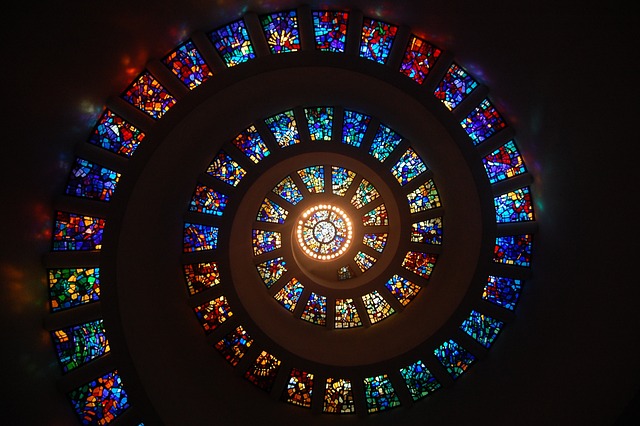The belief in the evil eye is found in various religions and cultures around the world. It is commonly associated with certain branches of Islam, as well as with Judaism and some forms of Christianity.
Table of Contents
The Belief in Evil Eye in Islam
The belief in the evil eye is a concept that is present in various religions and cultures around the world. It is a belief that certain individuals have the power to cause harm or misfortune to others simply by looking at them with envy or jealousy. While the belief in the evil eye is not exclusive to any one religion, it holds a significant place in Islam.
In Islam, the belief in the evil eye is deeply rooted in the teachings of the Quran and the Hadiths. Muslims believe that the evil eye is a real and powerful force that can bring about harm and misfortune to those who are affected by it. It is seen as a form of black magic or witchcraft, and is considered to be a sin in Islam.
The concept of the evil eye in Islam is closely related to the idea of envy and jealousy. Muslims are taught to guard against envy and jealousy, as they are considered to be destructive emotions that can lead to harm. The Prophet Muhammad himself warned his followers about the dangers of the evil eye and advised them to seek protection from it.
To protect themselves from the evil eye, Muslims often recite specific prayers and supplications. One of the most commonly recited prayers is the “Ruqyah,” which is a form of Islamic exorcism. It is believed that reciting the Ruqyah can help to ward off the evil eye and protect against its harmful effects.
In addition to reciting prayers, Muslims also use various objects and symbols to protect themselves from the evil eye. One such object is the “Nazar,” which is a blue bead or amulet that is believed to have the power to ward off the evil eye. The Nazar is often worn as jewelry or hung in homes and businesses as a form of protection.
While the belief in the evil eye is prevalent in Islam, it is important to note that not all Muslims subscribe to this belief. Some Muslims may view the concept of the evil eye as a cultural superstition rather than a religious belief. However, for those who do believe in the evil eye, it is a significant aspect of their faith and is taken very seriously.
In conclusion, the belief in the evil eye is a concept that is deeply ingrained in Islam. Muslims believe that the evil eye is a real and powerful force that can bring about harm and misfortune. They take precautions to protect themselves from the evil eye by reciting prayers, using protective objects, and seeking spiritual guidance. While not all Muslims subscribe to this belief, it remains an important aspect of Islamic faith and culture.
The Concept of Evil Eye in Judaism

The concept of the evil eye is a fascinating belief that has been present in various cultures and religions throughout history. While many people may associate the evil eye with superstition or folklore, it holds significant meaning for those who believe in its power. In this article, we will explore the concept of the evil eye in Judaism, shedding light on its origins, significance, and practices associated with it.
In Judaism, the belief in the evil eye can be traced back to ancient times. It is believed that the evil eye has the power to cause harm or misfortune to those who are targeted by its gaze. This belief is deeply rooted in Jewish folklore and has been passed down through generations.
According to Jewish tradition, the evil eye is not just a physical gaze but also an envious or malevolent look that can bring about negative consequences. It is believed that certain individuals possess the ability to cast the evil eye, either intentionally or unintentionally, through their jealousy or envy. This can result in various forms of misfortune, such as illness, financial loss, or relationship problems.
To protect themselves from the evil eye, Jewish individuals have developed various practices and rituals. One common practice is wearing a talisman or amulet known as a “hamsa.” The hamsa is a hand-shaped symbol that is believed to ward off the evil eye and bring good luck. It is often worn as jewelry or displayed in homes and businesses.
Another practice associated with the evil eye is reciting prayers or blessings. Jewish individuals may recite specific prayers or blessings to seek protection from the evil eye and ask for divine intervention. These prayers are often recited in times of vulnerability or when one feels they may be a target of the evil eye.
In addition to these practices, there are also certain customs and traditions that are followed to ward off the evil eye. For example, it is common for Jewish parents to avoid praising their children excessively in public, as it is believed that this can attract the evil eye. Instead, they may use phrases like “kenahora” or “bli ayin hara,” which essentially mean “without the evil eye” and are used to ward off any potential harm.
While the belief in the evil eye is not a central tenet of Judaism, it is still widely acknowledged and respected within the Jewish community. It serves as a reminder to be mindful of one’s thoughts and actions, and to avoid harboring jealousy or envy towards others. By doing so, individuals can protect themselves and others from the potential harm caused by the evil eye.
In conclusion, the concept of the evil eye holds significant meaning in Judaism. It is believed to have the power to bring about misfortune and harm to those who are targeted by its gaze. To protect themselves, Jewish individuals practice various rituals, wear talismans, recite prayers, and follow customs that are believed to ward off the evil eye. While not a central aspect of the religion, the belief in the evil eye serves as a reminder to be mindful of one’s thoughts and actions, promoting a sense of empathy and compassion within the Jewish community.
Evil Eye and its Significance in Hinduism
The concept of the evil eye is prevalent in many religions around the world. It is believed that certain individuals possess the power to cast a malevolent gaze upon others, causing harm or misfortune. In Hinduism, the evil eye, known as “drishti,” holds significant importance. It is believed that the evil eye can bring about various negative effects on a person’s life, including illness, financial loss, and relationship problems.
In Hinduism, the evil eye is considered to be a result of jealousy or envy. When someone looks at another person with envy or ill-will, it is believed that their negative energy can cause harm. This negative energy can be directed towards anyone, regardless of their age, gender, or social status. Therefore, it is important for individuals to protect themselves from the evil eye and its potential consequences.
There are several ways in which Hindus protect themselves from the evil eye. One common method is by wearing a talisman or amulet, known as a “nazar battu.” This amulet is believed to ward off the evil eye and protect the wearer from its negative effects. The nazar battu is often made of blue glass or a combination of various metals, and it is worn as a pendant or bracelet.
Another way to protect oneself from the evil eye is by using certain rituals and prayers. Hindus believe that reciting specific mantras or prayers can create a protective shield against the evil eye. These prayers are often chanted or recited during religious ceremonies or daily rituals. By invoking the blessings of the deities, Hindus believe that they can ward off the evil eye and its harmful effects.
In addition to wearing amulets and performing rituals, Hindus also believe in the power of certain herbs and plants to protect against the evil eye. It is believed that certain plants, such as basil and neem, have the ability to repel negative energy and bring positive vibrations. Therefore, Hindus often keep these plants in their homes or wear them as garlands to ward off the evil eye.
Furthermore, Hindus believe that the evil eye can be removed through the practice of “nazar utarna.” This is a ritual in which a person is cleansed of the negative energy caused by the evil eye. The ritual involves the use of various items, such as salt, red chilies, and lemons, which are believed to absorb and remove the negative energy. The person performing the ritual recites prayers and chants, while waving the items around the affected person’s body. It is believed that this ritual can cleanse the person of the evil eye and restore their well-being.
In conclusion, the evil eye holds significant importance in Hinduism. It is believed that the evil eye can bring about various negative effects on a person’s life, and therefore, it is important for individuals to protect themselves from its harmful consequences. Hindus use various methods, such as wearing amulets, performing rituals, and using specific herbs and plants, to ward off the evil eye. By doing so, they believe that they can maintain their well-being and protect themselves from the negative energy associated with the evil eye.
Evil Eye and its Role in Folk Religions
The belief in the evil eye is a fascinating aspect of many folk religions around the world. While it may not be a concept that is widely discussed or understood in mainstream religions, it holds great significance for those who adhere to these folk traditions. So, which religion believes in the evil eye?
One religion that strongly believes in the evil eye is Islam. In Islamic culture, the evil eye, or “al-ayn” as it is known in Arabic, is considered a real and powerful force. It is believed that certain individuals possess the ability to cast a malevolent gaze upon others, causing harm or misfortune. This belief is deeply rooted in Islamic teachings and is mentioned in the Quran, the holy book of Islam.
Another religion that acknowledges the existence of the evil eye is Judaism. In Jewish folklore, the evil eye is referred to as “ayin hara.” It is believed that envy and jealousy can manifest as a harmful gaze, capable of bringing about negative consequences. Jewish tradition has various rituals and amulets to protect against the evil eye, such as the hamsa hand or the red string bracelet.
Moving away from the Abrahamic religions, we find that the belief in the evil eye is also prevalent in Hinduism. In Hindu culture, the evil eye is known as “drishti” or “nazar.” It is believed that certain individuals, often unintentionally, possess a powerful gaze that can cause harm or misfortune to others. Hinduism offers various rituals and remedies to ward off the evil eye, such as using lemon and chili peppers or tying a black thread around the wrist.
Similarly, in many parts of the world, particularly in Mediterranean and Middle Eastern cultures, the belief in the evil eye is deeply ingrained. It is often seen as a form of supernatural power that can bring about illness, bad luck, or even death. These cultures have developed numerous talismans and amulets, such as the blue eye symbol or the hamsa hand, to protect against the evil eye.
It is important to note that the belief in the evil eye is not limited to any specific religion or culture. It is a concept that transcends boundaries and is found in various forms across different societies. Whether it is called “mal de ojo” in Spanish-speaking countries or “mati” in Greek culture, the belief in the evil eye is deeply rooted in the human psyche.
In conclusion, the belief in the evil eye is a significant aspect of many folk religions around the world. Islam, Judaism, Hinduism, and various other cultures acknowledge the existence of the evil eye and have developed rituals and amulets to protect against its harmful effects. While the concept may not be widely discussed in mainstream religions, it holds great significance for those who adhere to these folk traditions. The belief in the evil eye is a testament to the rich diversity of human beliefs and the power of superstition in shaping our understanding of the world.
Conclusion
The belief in the evil eye is present in various religions and cultures around the world, including but not limited to Islam, Judaism, and certain branches of Christianity.
For licensing reasons, we must provide the following notice: This content was created in part with the help of an AI.



